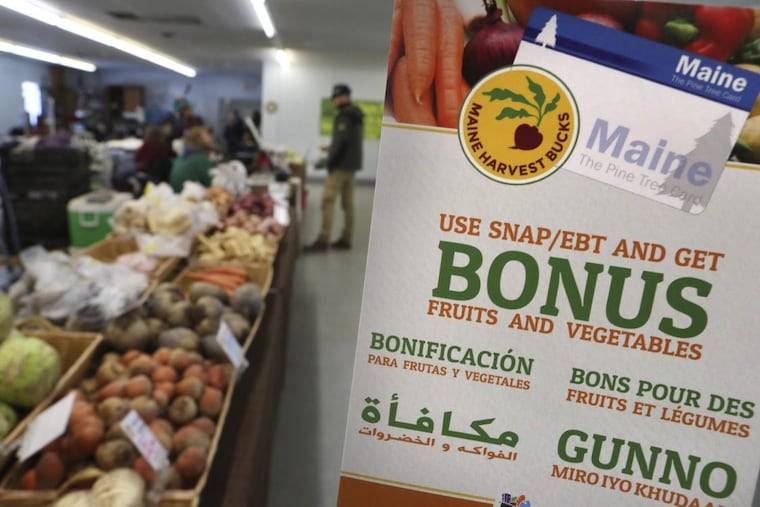
The number of people on food stamps is falling, due in part to the improving economy.
Nationwide, around 36 million Americans were on food stamps as of March, according to the U.S. Department of Agriculture, which administers the program known as SNAP, for Supplemental Nutrition Assistance Program.
That’s about 8 percent less than the roughly 39 million who were on SNAP at the same time last year, USDA figures show.
In Pennsylvania, the number of people receiving SNAP benefits dropped 6 percent, from 1.8 million in July 2018 to 1.7 million today, according to the Greater Philadelphia Coalition Against Hunger. In New Jersey, the numbers fell from about 763,000 to 703,000 in the last year, an 8 percent drop, USDA figures show.
In Philadelphia, those on SNAP decreased from 500,000 in December 2015 — the highest enrollment period in recent times ― to 459,000 today, an 8.5 percent drop, according to coalition figures.
SNAP is designed to automatically increase or decrease depending on how well the economy is doing, said Kathy Fisher, policy director of the coalition.
The falling numbers in the state are a reflection “of people getting back to work,” Fisher said.
But, she added, the decreases are nothing to crow about.
“Just because you’ve moved off SNAP, it doesn’t mean you’re on Easy Street,” Fisher said.
And, she said, the enrollment drops in both the state and the city “are not huge, and won’t affect the poverty rate,” Fisher said.
President Donald Trump has long proposed cutting SNAP benefits. “We have people that aren’t working,” he said in the speech he gave when he announced he was running for president in 2015. “We have people that have no incentive to work. But they’re going to have an incentive to work because the greatest social program is a job."
Nationwide, the decrease reflects not only the economy but changes in work rules related to SNAP, said Ellen Vollinger, Legal/Food Stamp Director of FRAC, the Food Research and Action Center, an anti-hunger lobbying group in Washington.
Since 1996, people aged 18 to 49 without a child younger than 18 have had to work at least 20 hours a week or be in school or job training to receive SNAP benefits. Anyone not following the rule would be limited to three months of benefits within a three-year period.
States, however, have been permitted to waive the time-limit rules in places of high unemployment. Pennsylvania has long fallen into that category. This is in recognition of the reality that, although most working-age SNAP participants have jobs, many sometimes fall below 20 working hours a week.
Lately, though, the Trump administration has recommended against waivers and many states have decided not to reapply for them.
“The numbers of people on SNAP have been coming down at sharper rates in states without waivers,” Vollinger said. “So it’s a more complex picture than an improving economy.”
Overall, the decrease in people on SNAP is a “partially good news story,” said Joel Berg, CEO of Hunger Free America, a national nonprofit headquartered in New York City. “But with nearly 40 million people still food insecure, our system is not working as well as it should be.
“The best way to reduce hunger is to increase wages and safety-net programs for seniors, children, and people with disabilities.”
Beyond the economy and waiver changes, advocates say that the Trump administration’s immigration policy has frightened some mixed-status families from using SNAP.
The drop in SNAP enrollment will save taxpayers more than $10 billion, according to the Epoch Times, which generally is a pro-Trump news outlet.
Fact checkers at the Washington Post say that the administration is incorrectly taking full credit for the drop in SNAP, explaining that SNAP participation has been declining since 2012.
And, said Judith Levine, sociologist at Temple University, the economy was improving before Trump took office. “It’s a trend that started under President Obama,” she said.